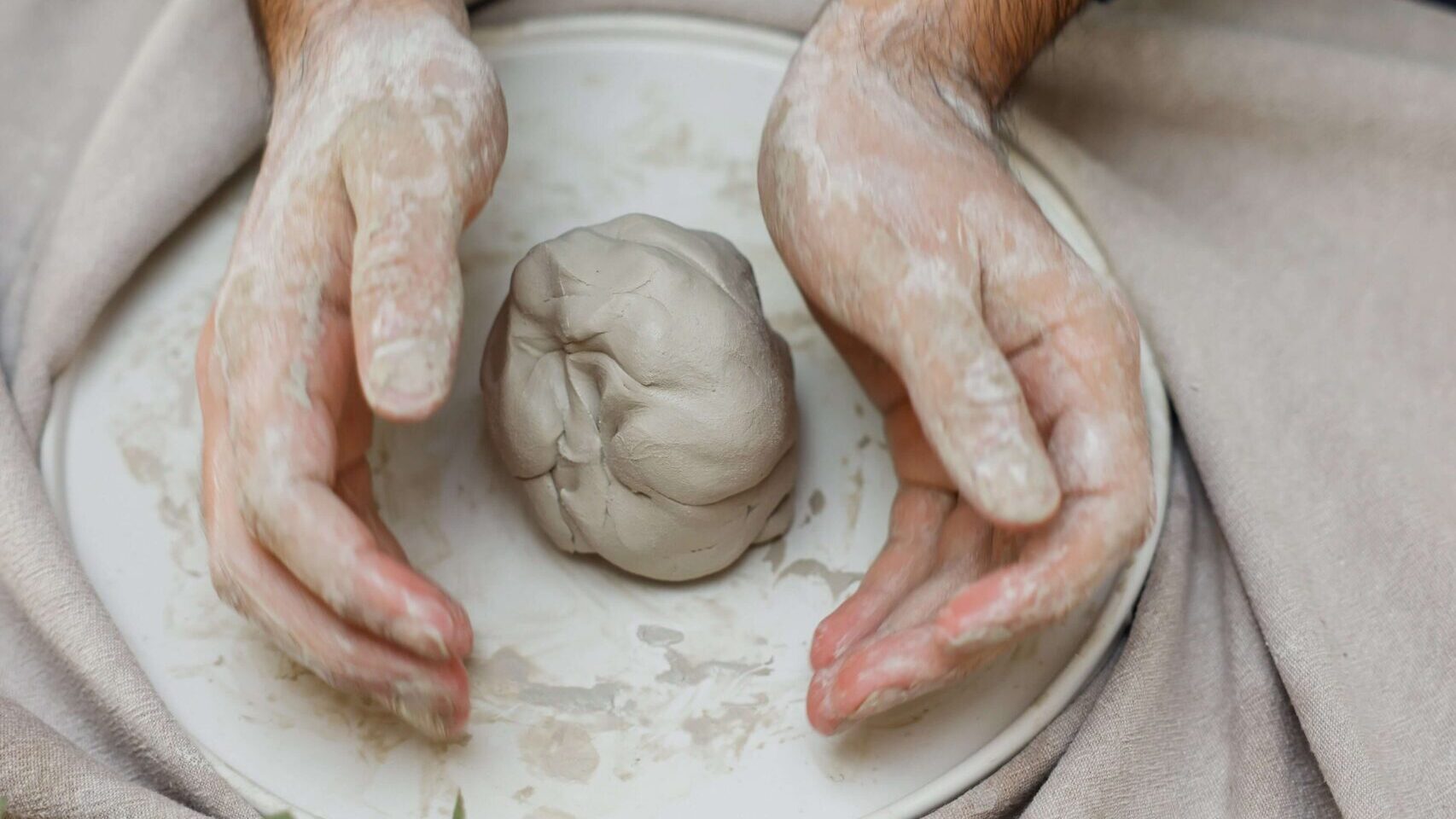Your cart is currently empty!

Air Dry vs. Ceramic Clay: Which is Better?
•
Introduction
As hand builders that work from home, both air dry and ceramic clay are in our heavy rotations. Because we use them both in different tutorials and articles, we wanted to give you the rundown on what exactly the differences and similarities are between air dry vs. ceramic clay. Each has very specific use cases and their fair share of pros and cons. So before selecting which type of clay to use for your next project, read on to make sure you’re fully informed!

Ceramic Clay
Ceramic clay is likely the star of your daily pottery saga – it’s the stuff of your favorite mugs, elegant plates, and artsy vases. Its superpower? The kiln! Ceramic clay undergoes a transformation with two rounds of firing: the initial bisque firing, followed by a glaze firing. Post-firing, the clay achieves full vitrification, sealing its fate as a non-porous, bacteria-resistant hero.
What are the different types of ceramic clay?
Earthenware: A low-firing clay, perfect for artistic endeavours but less durable.
Stoneware: Tough and versatile, great for both artistic and functional ware. (and, our personal fave!)
Porcelain: The refined, elegant choice, known for its smooth finish and resilience.
What are the best applications for ceramic clay?
Its ability to withstand water and heat once fired makes it ideal for creating functional ware like dishes, vases, and tiles. Ceramic clay is also a favorite for artistic sculptures and detailed work, thanks to its fine texture and strength after firing.

How does ceramic clay age over time?
The durability of kiln-fired ceramic pieces is legendary. They resist color fading, maintain structural integrity, and stand up well to wear and tear. Ceramic items, if properly glazed and fired, can last for centuries (just visit a museum!), often becoming cherished heirlooms. However, they can be brittle and prone to cracking or chipping if dropped.
What are the costs associated with ceramic clay?
While the clay itself might not be overly expensive, the associated costs can add up. Owning or accessing a kiln is a significant factor, as is purchasing glazes and specialized tools. However, for those serious about pottery, the investment in ceramic clay and its accessories can be rewarding in the long run.
What are the pros of using ceramic clay?
Durability: Fired ceramic clay is like a pottery superhero, strong and long-lasting.
Functional Ware Friendly: Slap on some food-safe glaze, and you’ve got yourself a trusty mug or plate.
Diverse Artistic Possibilities: From rustic earthenware to sleek porcelain, your artistic spirit can roam free.
What are the cons of using ceramic clay?
Kiln Dependency: Without a kiln, ceramic clay is like a bird without wings.
Hollow Art Necessity: Sculptural pieces need to be hollow to avoid dramatic kiln explosions.

Air Dry Clay
What are the different types of air dry clay?
Standard Air Dry Clay: The all-rounder, perfect for various craft projects.
Paper-Based Air Dry Clay: Lightweight and great for detailed work.
Porcelain Air Dry Clay: Mimics the elegance of fired porcelain, ideal for delicate pieces.
What are the best applications for air dry clay?
This type of clay is perfect for decorative items, educational projects, and crafts. Its ease of use makes it great for children’s projects and beginner potters. While not suitable for functional items that encounter water or heat, it’s excellent for sculptural art, figurines, and home décor pieces.

How does air dry clay age over time?
Air dry clay, while convenient, doesn’t boast the same resilience as ceramic clay. Over time, pieces made from air dry clay can become brittle, especially if exposed to moisture or extreme temperature changes. They are more susceptible to wear and fading, and their structural integrity over the years isn’t as robust as kiln-fired ceramics.
What are the costs associated with air dry clay?
This type of clay is more wallet-friendly upfront and widely available in craft stores. It doesn’t require special equipment like kilns or glazes, making it a cost-effective option for hobbyists or those doing occasional projects. However, its limitations in terms of durability and functional use need to be considered.
What are the pros of using air dry clay?
Affordable and Accessible: No need to break the bank or hunt down a kiln.
Sculptor’s Delight: Its malleability is a sculptor’s dream come true.
What are the cons of using air dry clay?
Porosity Issues: This clay is like a sponge to water, which can lead to bacteria woes.
Not for Dining: Food-safe is not its game, so it’s best for decorative pieces.
Choosing Between Air Dry vs. Ceramic Clay – A Potter’s Perspective
When it comes down to choosing sides in the air dry vs. ceramic clay debate, our hearts lean towards ceramic clay. Its enduring nature, versatility in applications, and status as a traditional medium in pottery art are hard to beat. That said, we can’t overlook the convenience and accessibility of air dry clay, especially for those just beginning their pottery journey or without access to a kiln. Air dry clay has been a trusty companion in many of our home-based projects. Ultimately, whether you choose to mold your dreams with air dry or ceramic clay, the key is to be well-informed about their strengths and limitations. Each type of clay carries its unique charm and challenges, ready to be embraced by the hands of a creative artist. 🏺🎨

Leave a Reply